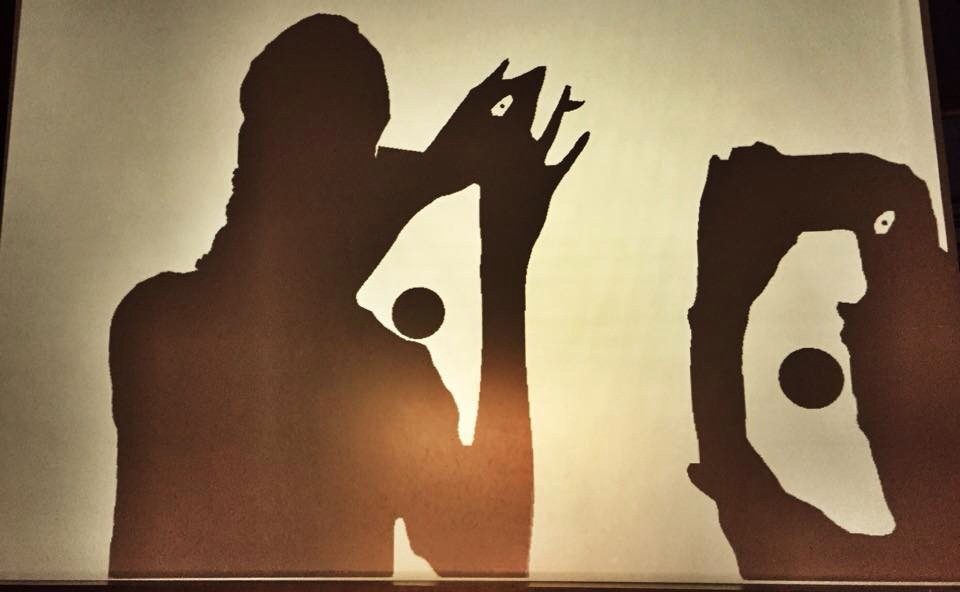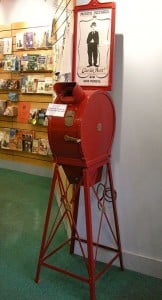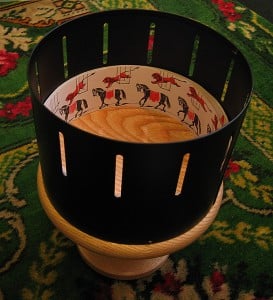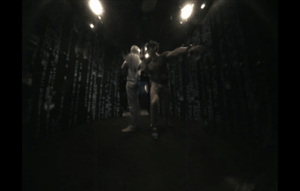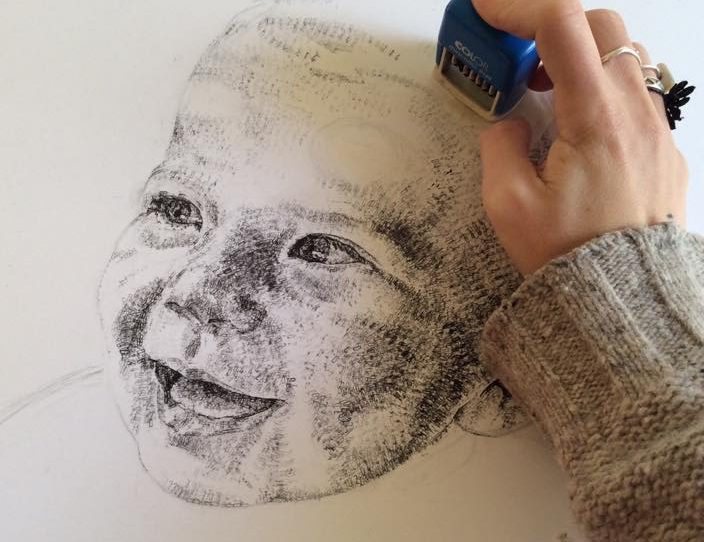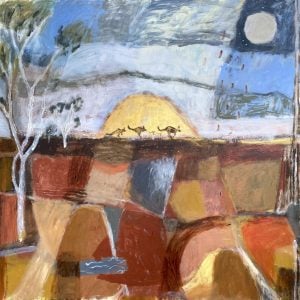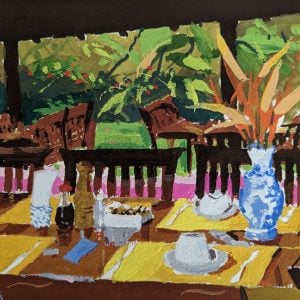ACMI Screen Worlds – find inspiration for your art
“The object isn’t to make art, it’s to be in that wonderful state which makes art inevitable.” ~Robert Henri
My object wasn’t to make art the other day when I found myself wondering around Federation Square, but thanks to ACMI ‘s Screen Worlds making art was inevitable and I was reminded of what a wonderful world human ingenuity and creativity has given us.
Screen Worlds: The Story of Film, Television and Digital Culture is ACMI’s permanent exhibition and like many Melburnians, I had no idea it existed until I stumbled in there on a whim. The exhibition spans 110 years of the moving image starting with fascinating working victorian Mutoscopes and zoetropes, moving through to the rise of film and television and finishing in the digital age. It’s an exhilarating whistle stop tour that will leave you feeling inspired. Better yet, the interactive exhibits make you the artist.
First, let’s go back to zoetropes. As you can see in the picture above they are a fairly simple device but were an important step in the development of film making. Surprisingly, in recent years they’ve been making a comeback and still have the ability to make people’s mouths drop in awe. When you first approach the Ty the Tasmanian Tiger Zoetrope at Screen Worlds it looks like a magnificent display of toys in Geppetto’s workshop. It’s impressive… but you haven’t seen anything yet. When it’s spun with strobe lighting a mind boggling optical illusion begins; the magic of Pinocchio is realised in front of your eyes as the toys come to life. It’s kind of a 3D animation without computer graphics or glasses. Below is a spoiler video but I recommend going and seeing it for yourself.
After my journey through the history of the moving image, I was drawn to a futuristic spaceship that had landed in the middle of the exhibition. It was surrounded with laughter and students. I peered in the entrance and saw a group jump and strike a pose. They rushed outside to look at the screens housed in the sides and all became clear. The Timeslice has thirty six cameras that produce a ‘bullet time’ sequence: the one made famous by The Matrix trilogy. The cameras, which are set at regular intervals around the walls, take a photo at the same time and produce an animation that looks as if time has frozen as the camera rotates around its subjects. The best thing about the Timeslice is that it emails you the sequences you make. It’s great for budding action heroes, film makers on low budgets and artists who don’t have friends that will model for hours. My friend and I tried to get our Neo on twice and miserably failed. Still, awesome footage despite the unco models.
Freezing time ticked off my bucket list, I rushed past the playable display showcasing the evolution of games consoles (I’ve wasted enough of my life playing Zelda and Mario 3) until I found myself in the far dark corner of the exhibition. As we’ve been taught throughout the history of film, television and computer games, in dark corners live monsters and Screen Worlds didn’t disappoint. A lonely light-box with a sign reading ‘Don’t be scared’ next to it made me feel a little nervous. I stood in front of the box and on the wall opposite there was my shadow, only it wasn’t me; I had Medusa’s hair and beaks with teeth for hands! Phillip Worthington’s Shadow Monsters digitally enhances its shadow puppeteers into monsters to great effect. You quickly lose your inhibitions as you get immersed into the mythical world you’re creating on the screen. You might even end up doing a ritual monster dance with a complete stranger as I did.
In short, as the famous philosophers of Lego Movie fame once said, ‘Everything is awesome!’. I’ve only scratched the surface here. There really is a world to explore and be inspired by at ACMI’s Screen Worlds and I saved the best for last: it’s FREE!

